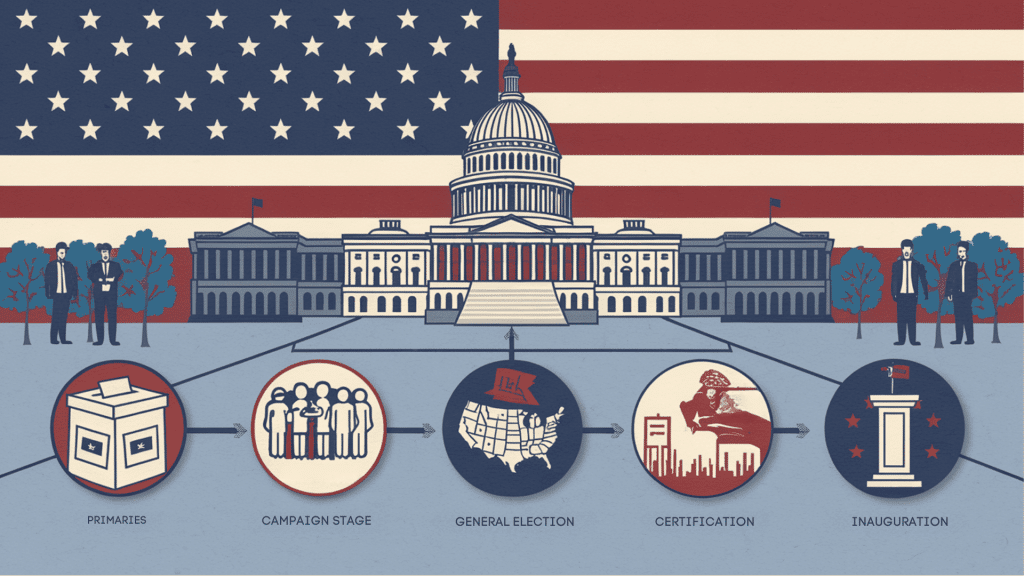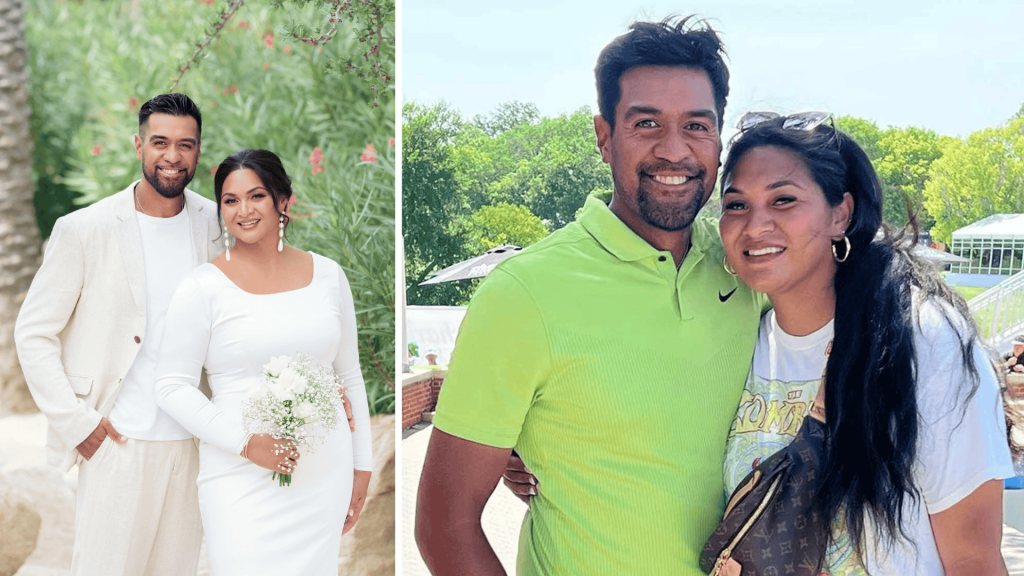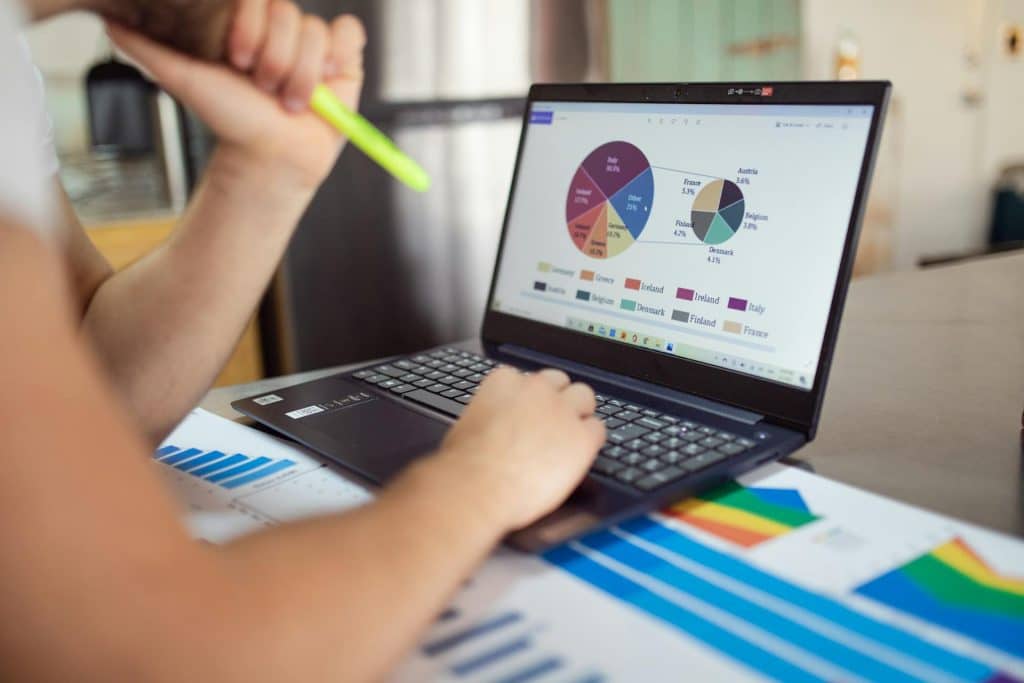How does someone go from a regular citizen to the President of the United States?
It’s not as complicated as national news makes it out to be. The election process has clear steps that every candidate follows.
In this blog, I’ll show you exactly how American elections work. You’ll learn about primaries, the Electoral College, and everything in between. No confusing political jargon – just simple facts that make sense.
What Are Primary Elections?
Primary elections are contests within political parties to choose their candidate for the general election. Think of them as the first round of competition.
Types of Primaries
There are several types of primary elections:
- Open primaries – Any registered voter can participate, regardless of party
- Closed primaries – Only registered party members can vote
- Semi-closed primaries – Independent voters can choose which party’s primary to join
How Primaries Work
During primary season (typically February through June), candidates travel across the country campaigning for their party’s nomination. Voters in each state cast ballots for their preferred candidate.
The candidate who wins the most delegates becomes their party’s nominee for president. These delegates then vote at the national party convention to officially select the nominee.
Caucuses vs Primaries: What’s the Difference?
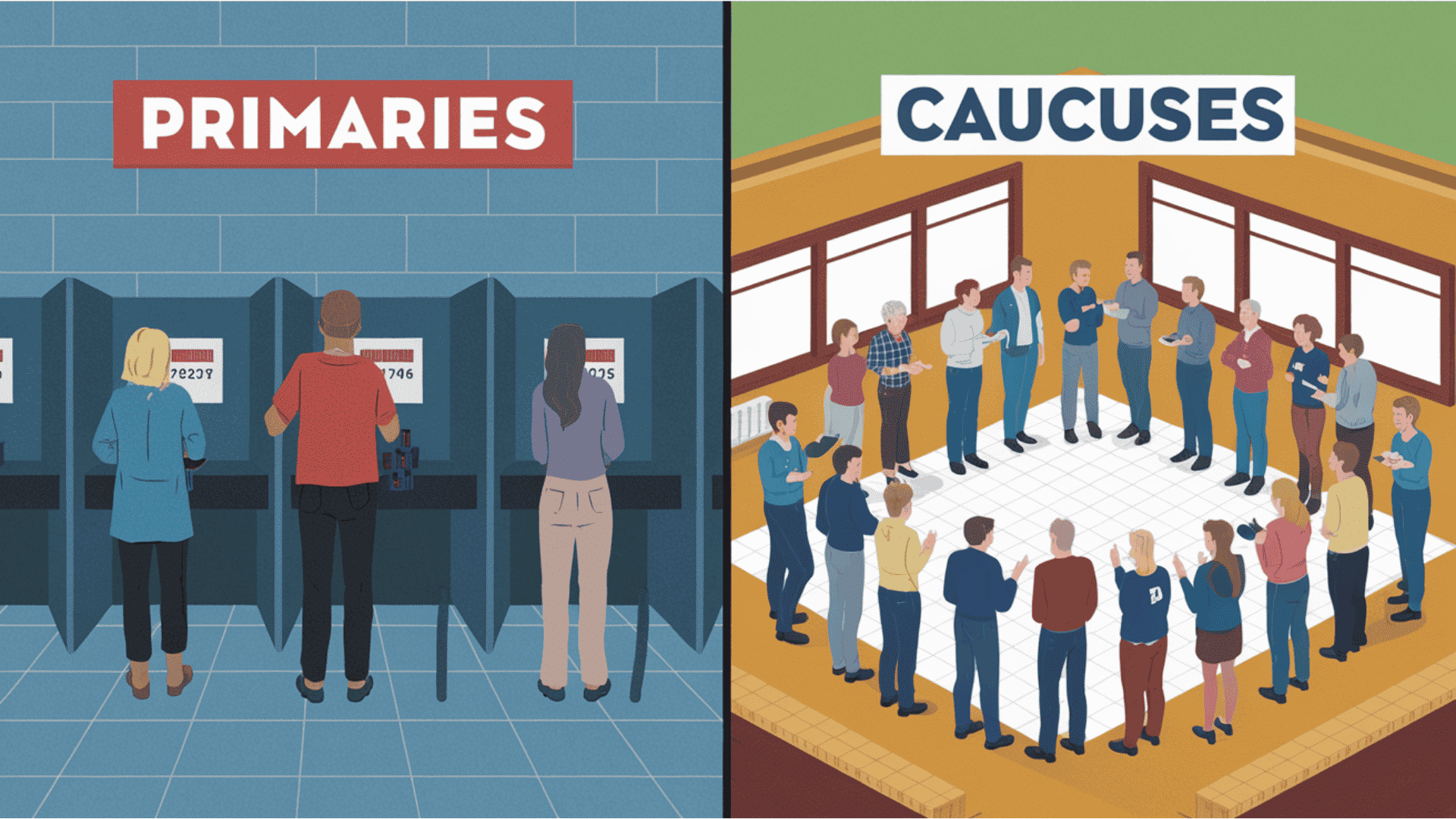
While most states hold primary elections, some use caucuses instead. Here’s how they differ:
| Primary Elections | Caucuses |
|---|---|
| Private ballot voting – no one knows your choice | Public discussion and voting – neighbors see your decision |
| Voting at polling stations – convenient locations like schools | Meeting at community centers, town halls, or gyms |
| Quick process (minutes) – vote and leave when ready | Longer process (hours) – stay for full discussion rounds |
| Higher voter turnout – easier for working people | Lower voter turnout – requires a significant time commitment |
Caucuses involve neighbors gathering in rooms to discuss candidates openly. People physically move to different areas to show support for their preferred candidate. It’s more social but takes much more time.
The General Election Process
After both major parties select their nominees, the general election campaign begins. This typically runs from summer through November.
Key Components of General Elections
Campaign Season: Candidates travel nationwide, participate in debates, and spend millions on advertising. They focus on swing states where the outcome is uncertain.
Voter Registration: Citizens must register to vote in advance. Each state has different deadlines and requirements.
Election Day: Held on the first Tuesday after the first Monday in November. Polling stations open early and close in the evening.
How the Electoral College Really Works
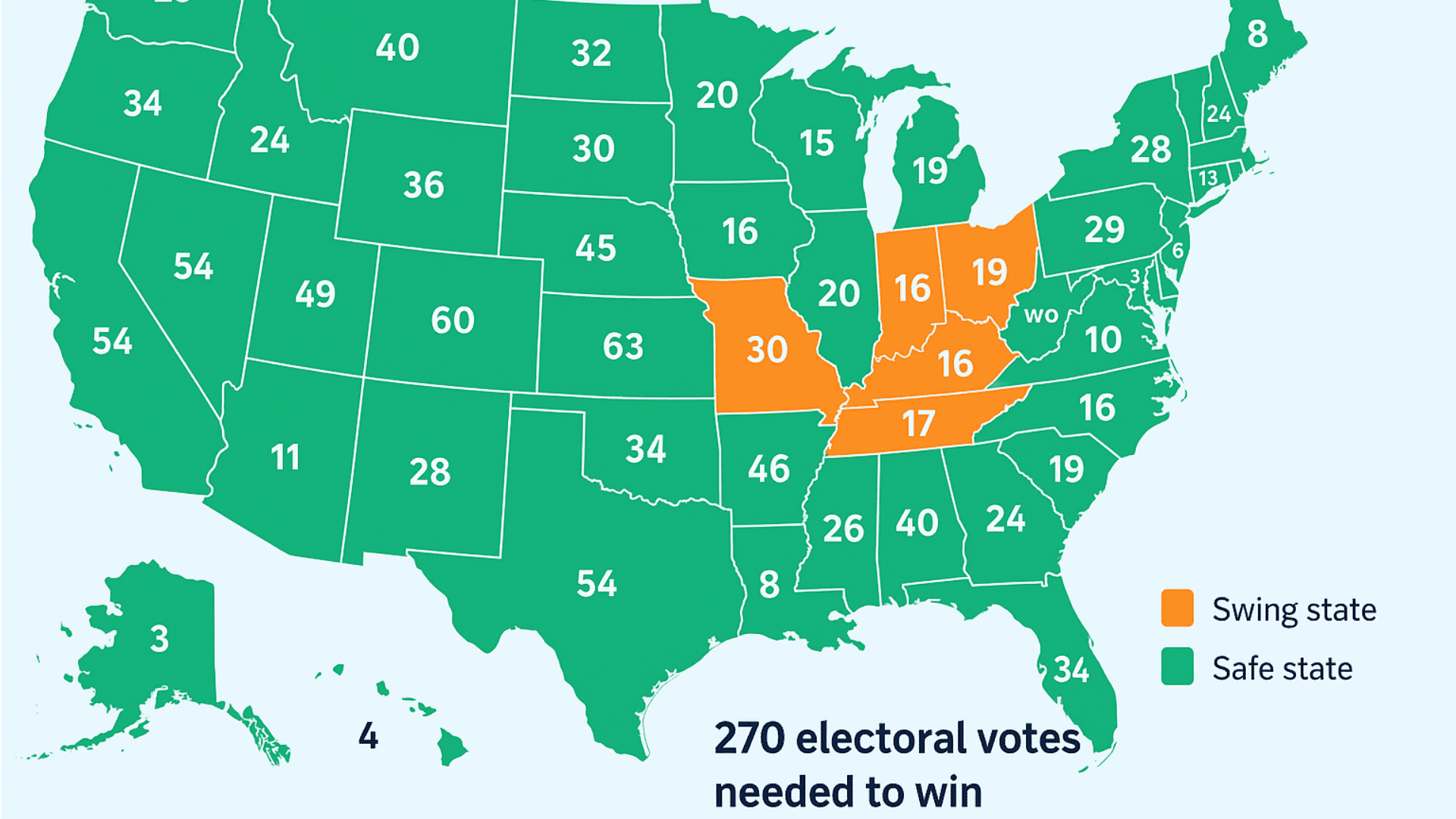
Here’s where many people get confused. Americans don’t directly elect the president. Instead, we use the Electoral College system.
Electoral College Basics
- Each state gets electoral votes equal to its total congressional representation
- Most states use “winner-take-all” – whoever wins the popular vote gets all electoral votes
- A candidate needs 270 electoral votes to win the presidency
- If no candidate reaches 270, the House of Representatives decides the winner
Why We Use This System
The Electoral College ensures smaller states maintain influence in presidential elections. Without it, candidates might only campaign in large cities and ignore rural areas.
Example: California has 54 electoral votes, while Wyoming has 3. But Wyoming’s votes per capita are actually higher, giving smaller states proportionally more influence.
What Happens After Election Day?
Think election night is the finale? Not quite. The real behind-the-scenes work happens over the next two months.
December: Electoral College Votes
- When: First Monday after the second Wednesday in December
- What happens: All 538 electors gather in their state capitals to cast official ballots. They meet in government buildings, often the state capitol or governor’s mansion.
- Reality check: This is mostly ceremonial. Electors almost always vote for the candidate who won their state’s popular vote.
January: Congressional Certification
- When: January 6th (unless it falls on a Sunday)
- Where: Joint session in the House chamber at the U.S. Capitol.
- The process: The Vice President opens sealed certificates from each state and reads the results aloud. Congress counts every single electoral vote.
- What can go wrong: Occasionally, members of Congress object to certain state results, leading to debates and separate votes in each chamber.
Inauguration Day
- When: January 20th at noon (exactly when the new term begins).
- Where: West steps of the U.S. Capitol in Washington, D.C.
- The moment: The president-elect places their hand on a Bible and recites the 35-word oath of office prescribed by the Constitution.
- The celebration: Millions watch as the peaceful transfer of power is completed – one of America’s most cherished traditions.
Ready to do more than just vote? Here’s your roadmap to election participation:
Step 1: Start with Your Own Voter Registration:
Ensure you’re registered and your information is up to date. Check your registration status online and update your address if you’ve moved.
Step 2: Stay Informed About the Issues:
Follow reliable national news sources and candidate websites. Learn their positions on issues that matter to you.
Attend local forums: Many communities host candidate debates or town halls where you can ask questions directly.
Step 3: Help Others Register to Vote:
Set up tables at community events, college campuses, or shopping centers. Use social media: Share voter registration deadlines and links with your network.
Help your circle: Walk friends and family through the registration process step by step.
Step 4: Volunteer for a Campaign:
Begin with phone banking from home, calling voters to remind them about upcoming elections. Go door-to-door: Canvass neighborhoods to talk with voters about your candidate.
Support events: Assist with rallies, fundraisers, or campaign office tasks, such as data entry.
Step 5: Work at Polling Stations:
Contact your local election office several months before Election Day, as poll worker positions fill up quickly. Complete training: Attend required training sessions to learn voting procedures and technology.
Commit to the day: Plan to work a full 12 to 14 hour shift on Election Day.
Step 6: Stay Engaged Year-Round:
Attend city council meetings: Local elections often have the biggest impact on daily life. Join civic organizations: Connect with groups that focus on issues you care about.
Keep learning: Elections happen every year – not just during presidential cycles.
Common Election Myths Debunked
Think you know how elections work? These common misconceptions might surprise you:
| What People Think | What Actually Happens |
|---|---|
| The popular vote winner always becomes president | Five presidents have won without winning the popular vote (most recently in 2000 and 2016) |
| Third-party votes are wasted | Third parties can influence major party platforms and swing election outcomes |
| All states vote the same way | Voting methods, registration rules, and primary types vary dramatically by state |
Don’t let these myths confuse you during election coverage. The real system is more complex and interesting than most people realize.
Conclusion
Now you know how U.S. elections really work. From primaries to inauguration, each step has a clear purpose.
When you watch national news during election season, you’ll understand why candidates spend so much time in swing states. You’ll know why poll numbers don’t always predict the winner.
Most importantly, your vote counts at every level. Local elections often matter more than presidential ones.
What surprised you most about the election process? Have you ever been to a caucus?

